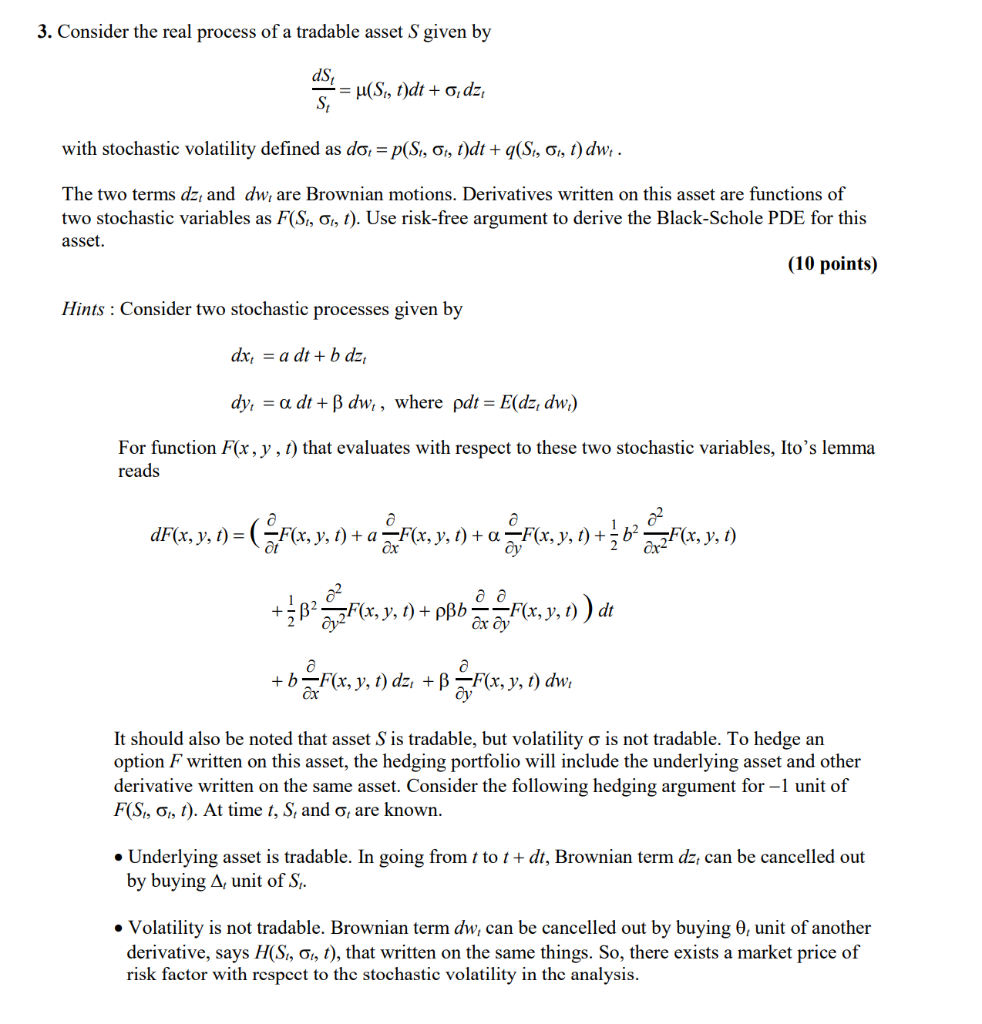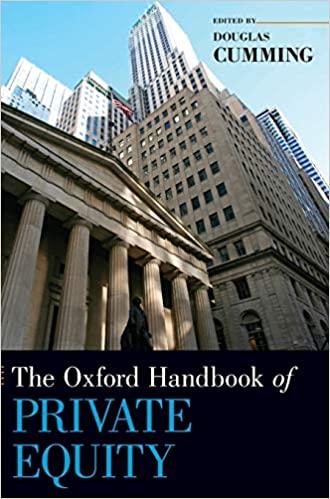
3. Consider the real process of a tradable asset S given by house ds, -= u(s, t)dt + Odz with stochastic volatility defined as do = P(Sc, 01, t)dt + 9(S1, 01, t)dwr. The two terms dz, and dw, are Brownian motions. Derivatives written on this asset are functions of two stochastic variables as F(S, 0, t). Use risk-free argument to derive the Black-Schole PDE for this asset. (10 points) Hints : Consider two stochastic processes given by dx, = a dt + b dzi dy, = a dt + dw,, where pdt = E(dz, dw.) For function F(x, y, t) that evaluates with respect to these two stochastic variables, Ito's lemma reads dF(x, y, i) = (@F(x , y, i) + a @F(x, y, i) + a F(x , y, z) + ba F(x, y, t) + ) +86 V, i) + pbeen dorpex, y,0))d +br(x, y, t) dza +B Be my F(x, y, -F(x, y, t) dw, It should also be noted that asset Sis tradable, but volatility o is not tradable. To hedge an option F written on this asset, the hedging portfolio will include the underlying asset and other derivative written on the same asset. Consider the following hedging argument for -1 unit of F(S., 0,, t). At time t, S, and o are known. Underlying asset is tradable. In going from t to t + dt, Brownian term dz can be cancelled out by buying A, unit of S. Volatility is not tradable. Brownian term dw, can be cancelled out by buying 0, unit of another derivative, says H(Si, 01, t), that written on the same things. So, there exists a market price of risk factor with respect to the stochastic volatility in the analysis. 3. Consider the real process of a tradable asset S given by house ds, -= u(s, t)dt + Odz with stochastic volatility defined as do = P(Sc, 01, t)dt + 9(S1, 01, t)dwr. The two terms dz, and dw, are Brownian motions. Derivatives written on this asset are functions of two stochastic variables as F(S, 0, t). Use risk-free argument to derive the Black-Schole PDE for this asset. (10 points) Hints : Consider two stochastic processes given by dx, = a dt + b dzi dy, = a dt + dw,, where pdt = E(dz, dw.) For function F(x, y, t) that evaluates with respect to these two stochastic variables, Ito's lemma reads dF(x, y, i) = (@F(x , y, i) + a @F(x, y, i) + a F(x , y, z) + ba F(x, y, t) + ) +86 V, i) + pbeen dorpex, y,0))d +br(x, y, t) dza +B Be my F(x, y, -F(x, y, t) dw, It should also be noted that asset Sis tradable, but volatility o is not tradable. To hedge an option F written on this asset, the hedging portfolio will include the underlying asset and other derivative written on the same asset. Consider the following hedging argument for -1 unit of F(S., 0,, t). At time t, S, and o are known. Underlying asset is tradable. In going from t to t + dt, Brownian term dz can be cancelled out by buying A, unit of S. Volatility is not tradable. Brownian term dw, can be cancelled out by buying 0, unit of another derivative, says H(Si, 01, t), that written on the same things. So, there exists a market price of risk factor with respect to the stochastic volatility in the analysis







